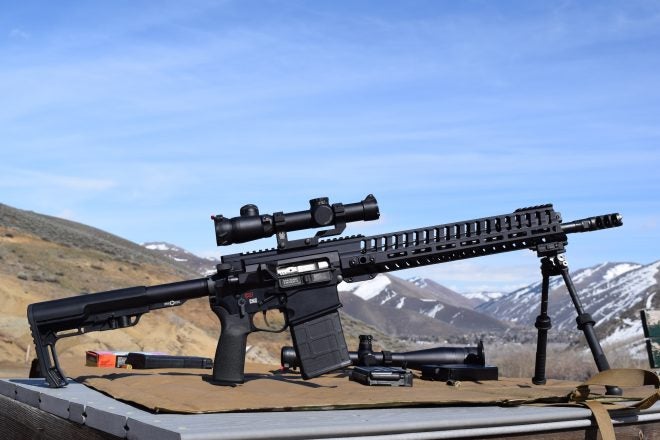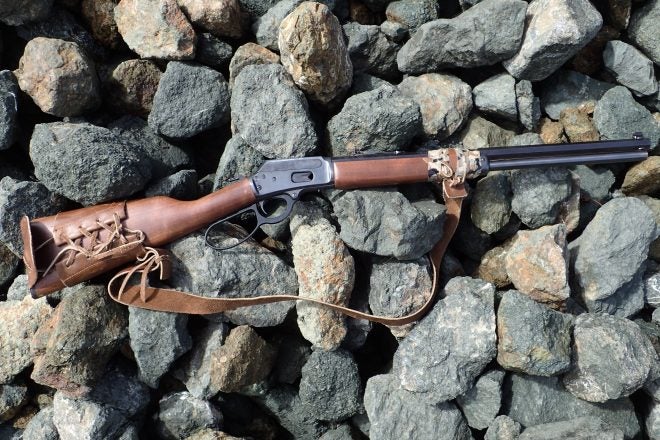Welcome to our reoccurring series of “Home on the Range.” Here, we would like to share all of our experiences for those who may be homesteading, living off the land, hunting, farming, ranching, and truly investing in nature and the great outdoors. The ability to provide for yourself and your family can be tremendously rewarding and simultaneously difficult at times. So, in “Home on the Range” we want to share our different exploits so you can learn and hopefully we can receive your feedback along the way as well.
Iron on the Range
Wherever your homestead might be, and whatever your primary pest is – be it two-legged, four-legged, slithering, or winged – firearms can be a super useful and essential tool just like the rest of your farming implements. However, the same as the rest of your equipment, improperly used or handled firearms can be deadly or injurious in the worst of ways. Proper use, respect, and care must be both learned and taught to all who help maintain your homestead with you. Today, let’s take a look at some of the basics, and I’ll relate some of my primary firearm choices on our homestead.

Homestead – Safety First!
I highly recommend anyone who is perhaps new to rural living or the practice of carrying a firearm every day to learn as much as they can in the ways of safely carrying, manipulating, and deploying their firearm. Of course it is basic, but if you, your loved ones, and perhaps your farm hands observe the four cardinal rules of firearms safety at all times, they preclude any misfortune from happening with a firearm.
- Treat all firearms as if they are loaded at all times
- Always point the muzzle in a safe direction
- Keep your finger off the trigger until you are ready to shoot
- Always be sure of your target and what lies beyond it
Trust me, treating a gunshot wound (if treatable) is not a way anyone wishes to spend their day, especially in a remote rural environment. Errant rounds cracking overhead is also a sure prelude to a ornery confrontation. Don’t be that person.
Methods of Carry
My environment consists of a dairy hay operation under pivot. Open sight lines on my property are from 500 yards to 2 miles. My biggest daily concern is rattlesnakes, and my biggest “carry tool” for that issue is, honestly, a shovel that I never walk around without. Typically I always have a pistol on the belt to deal with smaller nuisances, and either a shotgun or rifle slung or close at hand. The shotgun enables me to harvest upland game or waterfowl during the appropriate seasons and deal with rattlesnakes with more standoff than the shovel. The rifle (usually a SCAR 17S) enables me to deal with any problem that might arise out to 1,200 yards away, and also gives me the opportunity to harvest big game if I get real lucky on a “working day” during hunting season.

Ammunition Selection
For someone using firearms as a tool on their farm or ranch, the correct answer for “what ammo is the best” is “a wide variety.” Snake/ratshot have their place, and can be incredibly useful in disposing of barn pests. A wide selection of shotgun ammunition on hand at all times is extremely useful, especially if you might see snakes, ducks, geese, and chukar all in the same day. I find color-coded shotgun cards (stiff nylon shotshell carriers) can be a great aid in quickly getting the appropriate ammo for the game at hand. Being that my ranges are long and I have the chance of dealing with large animal issues as well, I tend to select powerful, deep penetrating ammunition for my handgun and rifle.

About rule #4…
Having your own place to shoot is one of many allures about owning rural land. Be sure you construct a durable, impenetrable, fire-safe backstop behind your target area. Make sure ricochet potential to both the shooter and your surrounding areas are minimized. Also, make sure the backstop is of an appropriate height. Your neighbor isn’t going to be thrilled if their pivot irrigation has some new spray holes the next morning or they are hearing rounds crack overhead while they’re trying to work. The same goes for broken clays, spent shot, and plastic wads falling on their side of the fence line. Speaking of neighbors: it’s good to get to know them, and if hunting will be something you will do on your land, work out some sort of agreement where you can at least retrieve an animal that runs onto their land and dies there.

Prepare for the Dark
Chances are if your plot of land is at all rural, it’ll be extremely dark at times when you are out and about around your property. While an IR laser equipped rifle combined with good night vision is the ultimate in quick and accurate night-time aiming and employment of a firearm, a good weapon mounted flashlight is a must on any working long gun. Not only must this light be bright, but it must be mounted in a way to minimize a shadow from the barrel of the weapon, and it must also be easy to quickly manipulate the controls of the light. If a pistol is all you wish to have with you, make sure some kind of light is either mounted on the handgun or available to be employed in conjunction with your pistol. Especially in these hot summer months, snakes are still an issue at night as well.


Parting Shots
If regarded with the proper respect, firearms can be an essential and useful tool just like anything else on the homestead. Regard them with the appropriate education, respect, and maintenance like the rest of your valuable farm implements, and they will be a useful facet of your homestead lifestyle.
The post Home On The Range #022: Firearms on the Homestead appeared first on AllOutdoor.com.


